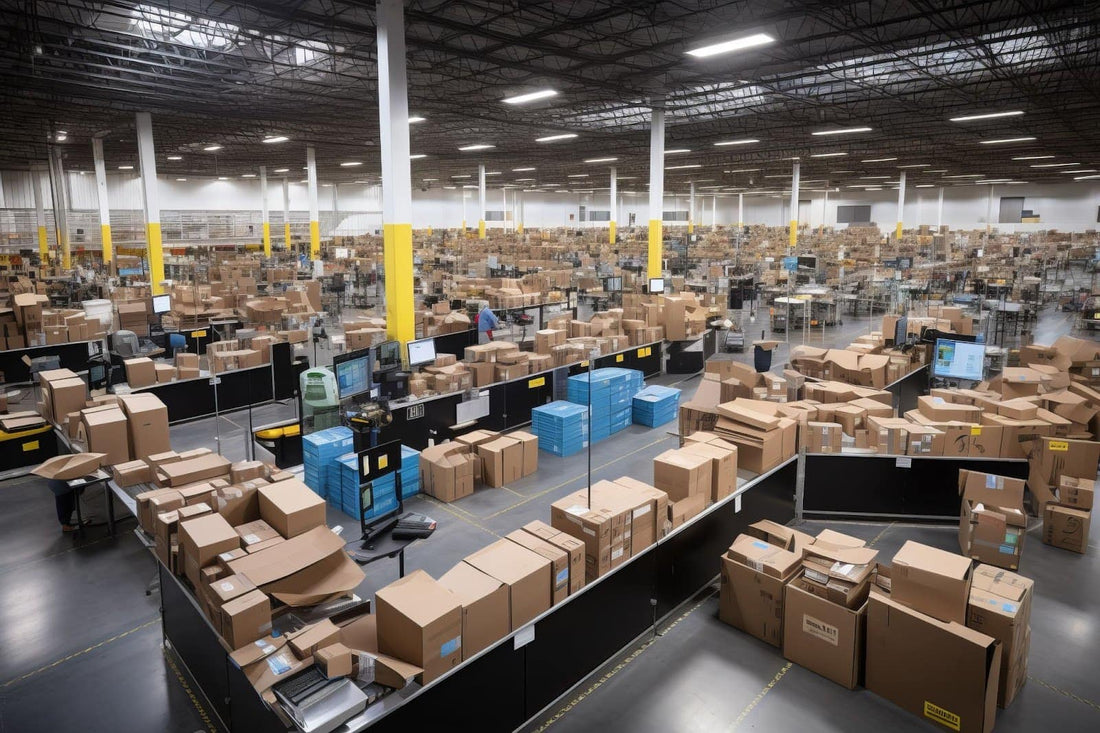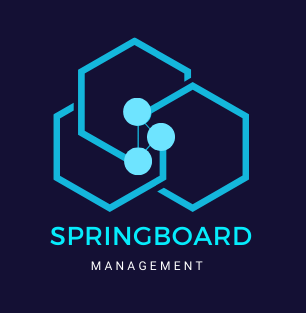
Fast, Personalized, Everywhere: How Data Is Reinventing Fulfillment
Share
Consumers used to marvel at 2-day shipping. Now they expect it. The bar has risen — fast, frictionless, and personalized fulfillment is no longer a competitive edge; it's a baseline expectation.
In the age of TikTok hauls and same-day delivery, the speed of commerce is outpacing the systems that power it. And yet, logistics is still treated as a cost center by many brands, instead of a strategic lever for customer experience and loyalty.
What often goes unseen is the operational cost of meeting these expectations. While customers demand near-instant delivery, many companies don’t fully grasp the intense pressure placed on warehouses, fulfillment centers, and frontline employees. This surge in demand without a proportional investment in sustainable systems has led to alarmingly high warehouse turnover rates. According to the U.S. Bureau of Labor Statistics, turnover in warehousing regularly exceeds 40% annually, fueled by labor shortages, burnout, and unrealistic performance metrics.
At Springboard Management, we’ve seen firsthand how brands that integrate data across marketing, supply chain, and customer experience functions can radically improve fulfillment, not just in speed, but in accuracy, personalization, and satisfaction.
This blog explores how modern fulfillment is being transformed by data, from predictive inventory planning to personalized last-mile experiences, and why now is the time to bridge the gap between operations and insight.
1. The New Bar: Amazon-Like Expectations — Everywhere
But this expectation comes at a cost, not just in infrastructure, but in human capital. The push for 1- and 2-day fulfillment puts enormous strain on warehouse teams and logistics staff. Without proper investment in systems, training, and workforce well-being, these demands lead to burnout and high attrition. Improving conditions isn’t just the right thing to do, it’s also a smart long-term strategy to ensure reliability and consistency.
Modern consumers expect the precision and speed of Amazon, no matter where they shop.
- According to a recent McKinsey & Company report, 75% of U.S. consumers have switched brands in the past year, often citing fulfillment speed or availability as key reasons.
- A Salesforce study found that 60% of customers say delivery speed influences their repurchase decision.
- Even legacy retailers like Target and Walmart are investing billions in same-day delivery infrastructure, knowing that loyalty is fragile and speed wins.
The challenge for most brands? Competing with giants while juggling fragmented data and siloed systems.
2. From Click to Doorstep: Mapping the Fulfillment Data Journey
Every customer interaction generates valuable data that can power better fulfillment decisions, if connected intelligently.
|
Fulfillment Stage |
Data Signal |
Strategic Use |
|
Site Click |
Item interest, browsing behavior |
Demand forecasting |
|
Cart Abandonment |
Price sensitivity, urgency |
Promotional retargeting |
|
Purchase |
SKU, zip code, timing |
Inventory allocation |
|
Fulfillment |
Pack/ship times, delays |
Operations benchmarking |
|
Delivery |
Last-mile carrier performance |
CX alignment |
|
Returns |
Reason codes, product issues |
Merchandising feedback |
Springboard Insight: We help brands move beyond passive reporting and toward proactive, cross-functional analytics — identifying where friction happens and how to prevent it upstream.
3. Predictive Inventory & Localized Demand Planning
Too much inventory ties up capital. Too little creates customer disappointment. The solution: data-driven forecasting and demand planning.
Use Case: Beauty Brand Regional Optimization
A clean beauty brand was consistently stocking out of its hero product in Southern California while overstocking in the Midwest. Springboard helped them analyze purchase behavior by region, coupled with promotional calendars and historical patterns. The result: a 13% reduction in stockouts and more efficient warehouse utilization.
Use Case: Pet Category Reorder Models
A pet care company with high auto-reorder volume used Springboard’s analytics to project refill rates by breed size and product type. Outcome: optimized shipping schedules and reduced churn.
These are the kinds of small but powerful shifts that can drive massive improvements in CLV and profitability.
4. Emerging Technologies Shaping the Future of Fulfillment
While data integration and predictive analytics are revolutionizing fulfillment today, several emerging technologies promise to further transform the industry in the near future. AI-driven robotics and automation are increasingly being deployed in warehouses to speed up picking, packing, and sorting while reducing errors and labor strain. Internet of Things (IoT) sensors provide real-time visibility into inventory levels and asset conditions, enabling smarter, more responsive supply chains. Additionally, blockchain technology offers new possibilities for transparent, tamper-proof tracking of goods from origin to doorstep, enhancing trust and accountability across partners.
Early adopters leveraging these innovations not only boost operational efficiency but also lay the foundation for more resilient, scalable, and sustainable fulfillment models. At Springboard, we’re actively exploring how these technologies can be integrated with data-driven strategies to create seamless, customer-centric delivery experiences.
5. The Last Mile Gets Personal
Fulfillment doesn’t end with the warehouse. In fact, the last mile is now a brand touchpoint.
- 88% of customers say the delivery experience influences their perception of a brand (Source: Capgemini).
- Yet many companies still treat shipping as a third-party responsibility, without monitoring CX metrics like on-time delivery, first attempt success, or unboxing experience.
Personalized fulfillment can look like:
- Dynamic delivery windows based on customer location and behavior
- Real-time SMS updates with branded messages
- Packaging tailored by customer segment (e.g., sustainable for eco-conscious shoppers)
And while brands focus on last-mile optimization, they must also remember that every delivery is powered by a person (a driver, a picker, a packer). Companies that invest in their logistics teams and partners (with technology, fair policies, and performance transparency) are better positioned to scale sustainably.
Springboard’s POV: Personalization doesn’t stop at the marketing funnel. Data should power the delivery experience just as much as the homepage.
6. Bridging the Gaps: Where CX, Ops & Data Must Talk
Often, fulfillment pain points aren’t visible to decision-makers because the data lives in disconnected tools: a WMS here, a CRM there, a survey tool somewhere else.
That’s where we come in.
At Springboard, we specialize in connecting consumer-facing signals (like NPS, CSAT, or return comments) with operational data (like inventory velocity or carrier performance) to uncover the root causes behind delivery breakdowns.
For example:
- A dip in NPS in a key region turned out to be linked to a local carrier’s missed weekend deliveries.
- A spike in returns traced back to confusing size charts during a mobile promotion.
By pairing these insights with clear reporting and cross-functional storytelling, we enable brands to take decisive, cross-functional action.
Why Springboard Management Inc. is Different
Unlike traditional consultants or logistics providers who often focus narrowly on either operations or technology, Springboard takes a holistic, consumer-centric approach that integrates data across marketing, supply chain, and customer experience functions. We specialize in connecting fragmented data sources (from CRM and WMS to NPS surveys and inventory systems) to create a unified, actionable analytics framework.
Our unique strength lies in embedding consumer behavior insights directly into fulfillment strategies, enabling brands to not only move products faster but deliver personalized, frictionless experiences that drive loyalty. Additionally, we partner closely with cross-department teams, breaking down silos to align goals, clarify root causes of friction, and implement sustainable improvements that others overlook.
Simply put, we don’t just optimize fulfillment logistics, we help brands deliver on their promise from first click to last mile.
Conclusion: Fulfillment Is the Final (and First) Impression
Today’s best-in-class brands understand that fulfillment is no longer a back-office function, it’s a front-line customer experience driver.
Whether you're a DTC startup or a global CPG, your ability to deliver fast, personalize smartly, and fix friction before it scales is what separates reactive companies from resilient ones.
Data is not just a tool, it’s the thread that ties together every click, cart, carrier, and customer experience.
Ready to make your fulfillment data actionable?
Let’s talk about how Springboard can help you turn data into delivery excellence.
Contact us or explore our Advisory Sessions for a tailored data-driven fulfillment strategy.
Sources:
- McKinsey & Co. (2024): "US Consumer Trends: Loyalty, Friction & Fulfillment"
- Capgemini Research Institute: "The Last-Mile Delivery Challenge"
- Salesforce Research (2024): "State of the Connected Customer"
- Business Insider: "Target and Walmart’s Same-Day Delivery Race"
- U.S. Bureau of Labor Statistics: Warehousing and storage sector turnover data
- Springboard Internal Case Studies, anonymized for confidentiality
